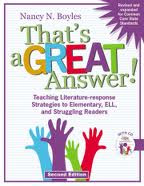Good morning everyone!! Today is the big day!!
We are so excited about swapping blogs and sharing some fun ideas with everyone! I will be guest blogging for April of A Modern Teacher. Denise from Sunny Days in Second Grade is my guest blogger!! I am so super excited because not only did we get a fabulous blogger but there is also a linky that you can use to hop through other great blogs! Hope you have a super, summer Saturday!!
Enjoy!!
Denise here from Sunny Days in Second Grade. I've been saving up some great Common Core math ideas to share with my readers, and what a great way to kick start it by guest posting here on my buddy Lynda's super adorable blog! With many of us moving toward CCSS this year or in the very near future, I've been delving into the standards and how to actually teach the depth of those standards. I was fortunate to attend a great training full of hands-on math activities that were really eye-opening for me.
This first activity is such a fantastic way to make a difficult concept crystal clear. All you need are some counters and a cup! {And yes, someone did indeed break into song at the sight of the red Solo cup!} We also used a whiteboard, but if you don't have those, paper will work just fine.
If you've ever tried to teach the concept of unknowns in an addition or subtraction problem, you know that it seems like it should be a lot easier than it is! Let's look at this problem as an example:
Here's a pictorial representation of how we explored the concept:
Easy, right? You can have the kids take turns with a partner creating and solving equations. I can picture this working as a center activity once they get the hang of it.
You can eventually work on moving the unknown to a different position or try two equivalent addition problems on either side, like this one:
The standard you'll be tackling with this is Operations and Algebraic Thinking, 2.OA.1. {Use addition and subtraction within 100 to solve one- and two-step word problems involving situations of adding to, taking from, putting together, taking apart, and comparing, with unknowns in all positions, e.g., by using drawings and equations with a symbol for the unknown number to represent the problem.}
Be sure to stop by my blog over the summer as I share more of the great little teaching ideas I picked up!
See you soon, my friends!


































